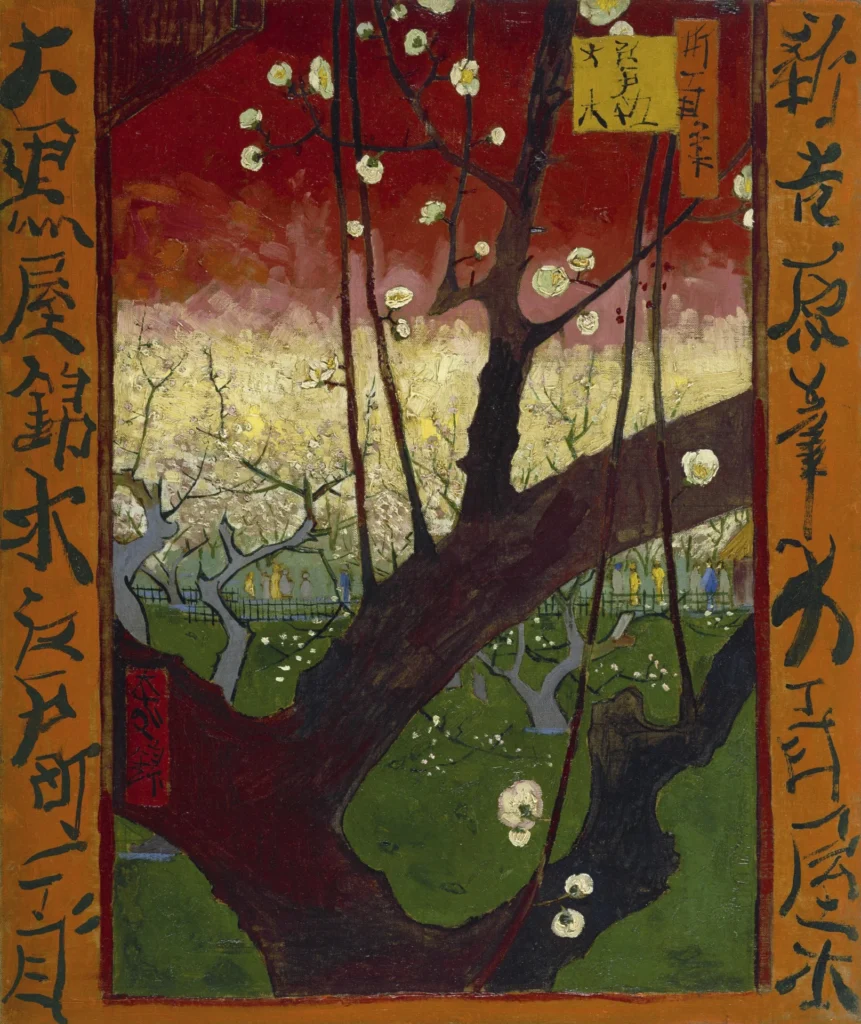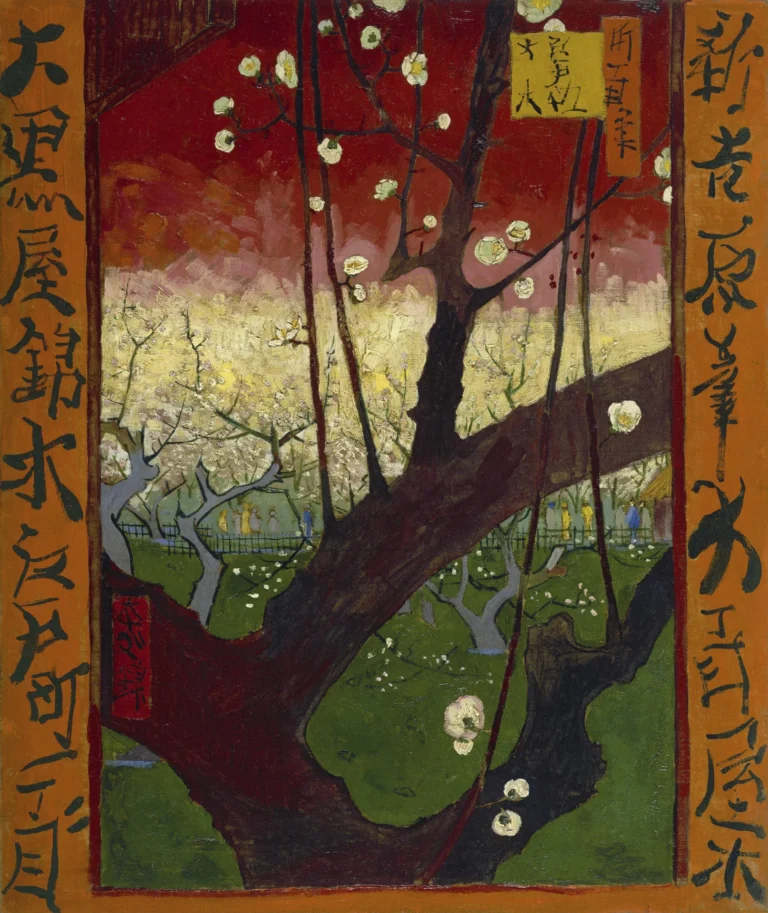Bloeiende Pruimenboomgaard - Naar Hiroshige
Created in 1887, Bloeiende Pruimenboomgaard - Naar Hiroshige is a vibrant oil painting by Vincent van Gogh that draws inspiration from Japanese artist Hiroshige. This captivating artwork depicts a blooming plum orchard, showcasing Van Gogh's ability to blend his unique style with Japanese motifs. The piece stands out for its lively colors and serene landscape, reflecting the dynamic artistic exchange of the late 19th century.
Year 1887
About the Artwork
The creation of Bloeiende Pruimenboomgaard - Naar Hiroshige marks a pivotal moment in Vincent van Gogh's artistic journey. Living in Paris during the late 19th century, he immersed himself in the art movements of the time, particularly the influence of Japanese prints, also known as Japonism. Van Gogh was inspired by Hiroshige's delicate depiction of natural elements, leading him to create this splendid homage to the Japanese artist. The painting not only captures the beauty of nature but also serves as a testament to Van Gogh's relentless exploration and adaptation of techniques that he encountered. The plum orchard, awash in vibrant colors, evokes a sense of peace and beauty, reflecting Van Gogh’s emotional connection to landscapes and his pursuit of capturing profound moments in nature. Today, it is celebrated as an essential work within his oeuvre.
Did You Know
Liked what you see? Add it to your collection.
Enjoyed reading? Share it.
... continued
Inspiration
The painting is inspired by the works of Japanese artist Hiroshige, reflecting Van Gogh's interest in Japanese art and culture during this period of his career.
Medium and Dimensions
The painting is executed in oil on canvas, with dimensions of 55 cm in height.
Date
It was painted in 1887, a period when Van Gogh was living in Paris and was heavily influenced by various artistic movements, including Japonism.
Style and Theme
The painting depicts a blooming plum orchard, capturing the vibrant colors and serene landscape that were characteristic of both Van Gogh's and Hiroshige's styles. This work showcases Van Gogh's adaptation of Japanese motifs and techniques into his own unique artistic vision.
Current Status
The original painting is now in the public domain, and it is part of the collection at the Van Gogh Museum, as indicated by the reference to the museum's catalog number (s0115V1962).










